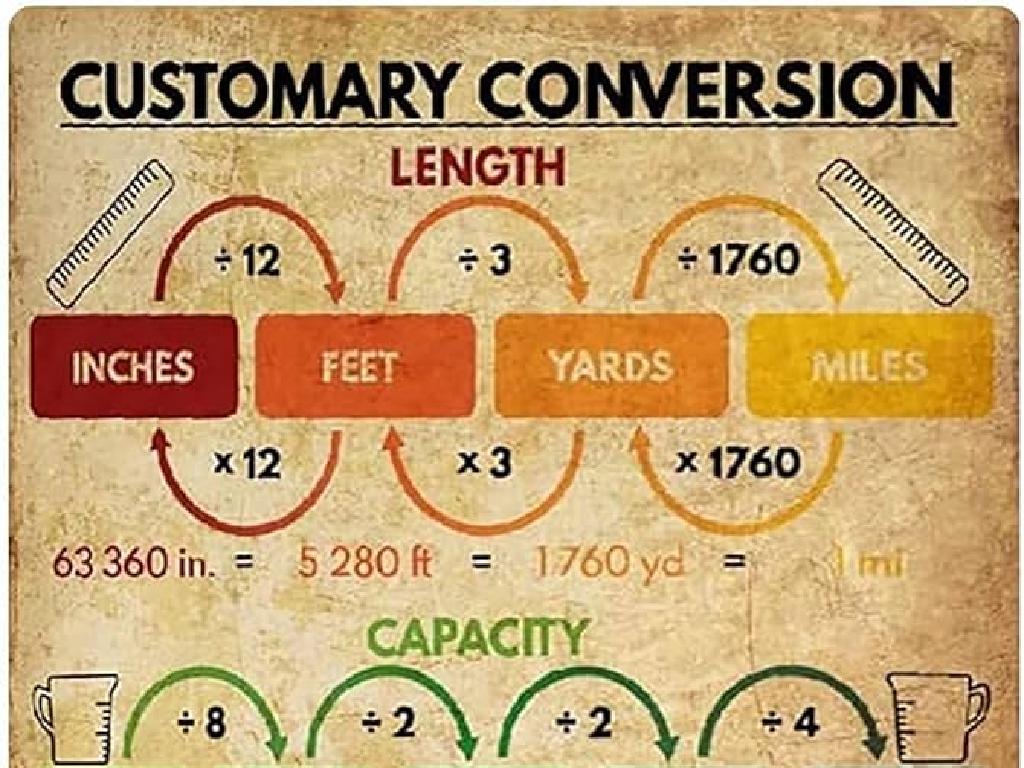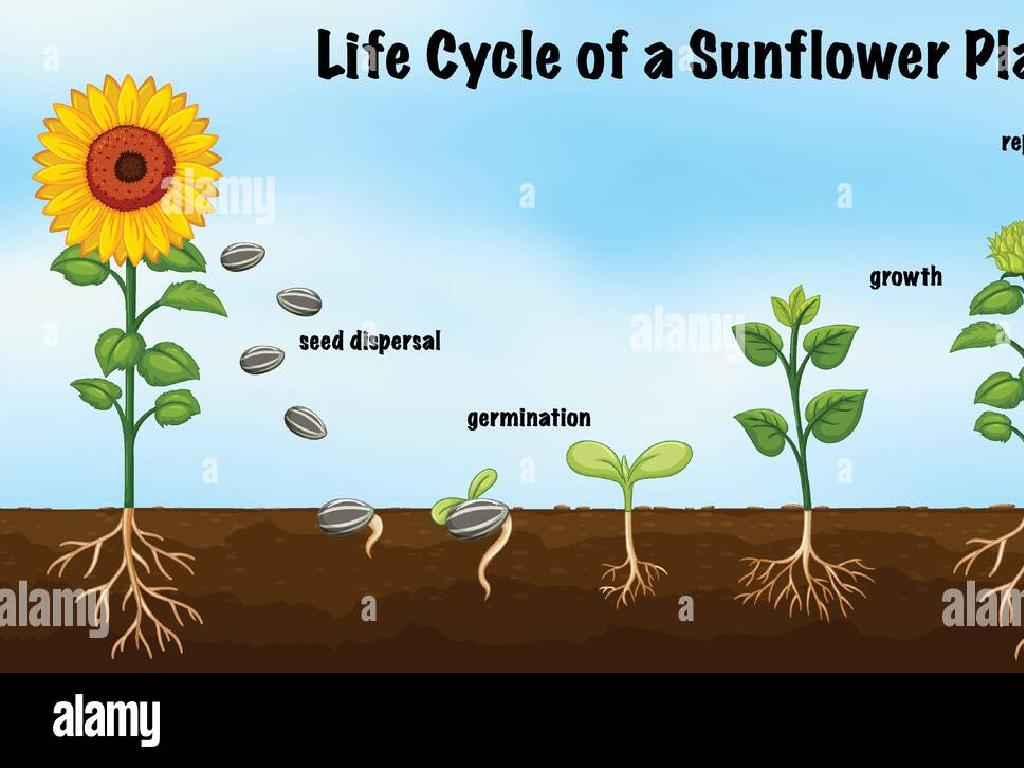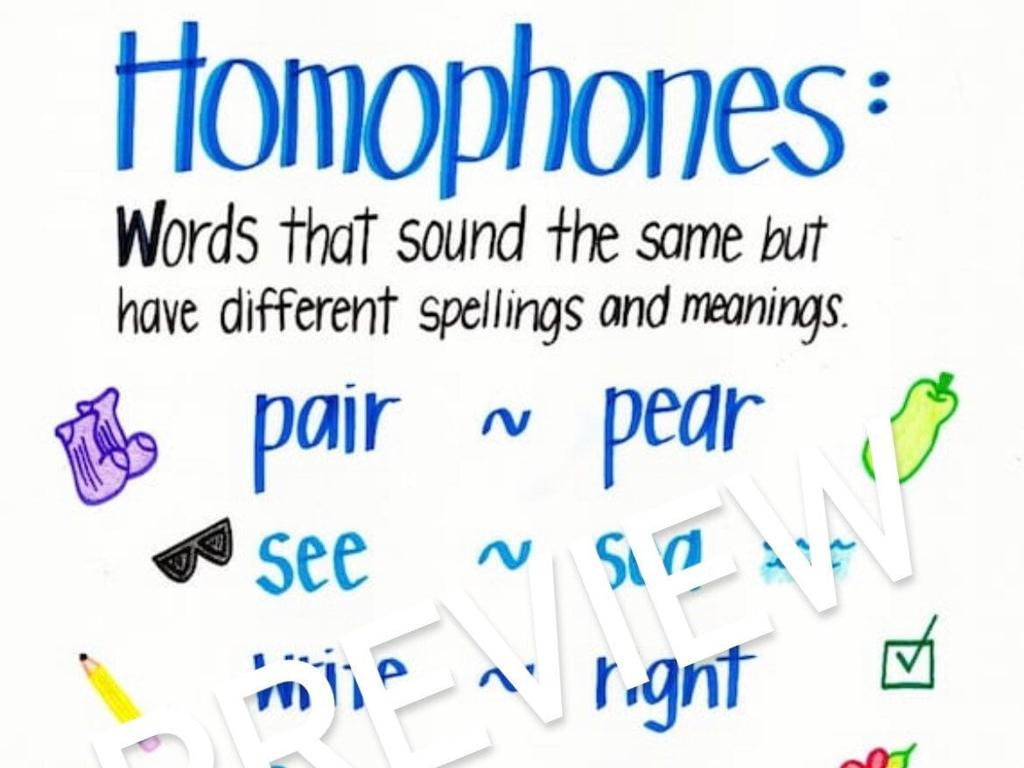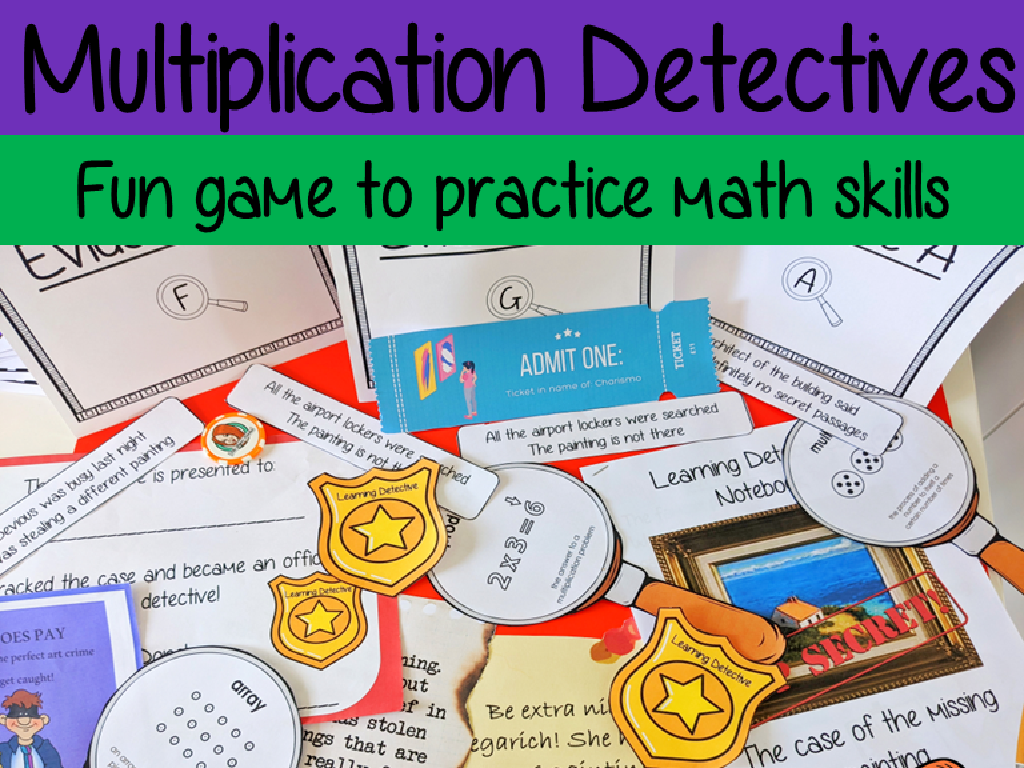Estimate Metric Measurements
Subject: Math
Grade: Sixth grade
Topic: Units Of Measurement
Please LOG IN to download the presentation. Access is available to registered users only.
View More Content
Introduction to Metric Measurements
– Understanding measurement units
– Units quantify physical properties like length, volume, and mass.
– Global use of the metric system
– The metric system is standardized, making it universally understood.
– Examples: Meter, Liter, Gram
– Meter measures length, Liter volume, and Gram mass.
– Estimation techniques
– Use reference objects to estimate measurements.
|
This slide introduces students to the concept of metric measurements, which are used to quantify physical properties such as length, volume, and mass. Emphasize the importance of the metric system as a global standard, which allows for consistent and clear communication of measurements across different countries and fields. Provide examples of metric units like the meter for length, liter for volume, and gram for mass. Teach students basic estimation techniques, such as using familiar objects (e.g., a pencil is about 15 cm long) to approximate measurements. Encourage them to practice estimating and comparing metric measurements in everyday contexts.
The Importance of Estimation in Measurement
– Understanding estimation
– Estimation: approximating a number that is not exact but close.
– Estimation in daily life
– Examples: guessing time, measuring ingredients without tools, or approximating distance.
– Estimation versus exactness
– Exact measurement is precise, estimation gives a general idea which is faster and often sufficient.
– Practice estimation skills
|
This slide aims to introduce students to the concept of estimation within the context of metric measurements. Estimation is a valuable skill that allows for making quick, reasonable guesses about quantities without needing precise measurements. It’s particularly useful in situations where speed is more important than accuracy, or when exact tools are not available. Students should understand that while exact measurements are necessary for some tasks, estimation is a practical approach in many real-life scenarios, such as cooking or making quick decisions. Encourage students to think of times they have used estimation and discuss the outcomes. Activities can include estimating lengths of objects in the classroom, volumes of containers, or weights of personal items, and then comparing those estimates to actual measurements.
Estimating Length in Metric Units
– Estimating length in meters
– Use everyday items to gauge meters, like a door is about 2m tall.
– Estimating length in centimeters
– A pen is roughly 15cm long, useful for smaller measurements.
– Using objects as reference
– Class Activity: Length Estimation
– Students will guess the length of various items around the classroom.
|
This slide introduces students to the concept of estimation in metric units. Start by explaining that estimation is a useful skill for making quick, reasonable guesses about measurements. For meters, use relatable objects such as a door or a desk to help students visualize the size of a meter. For centimeters, smaller common items like a pen can be used as a reference. During the class activity, have students practice by estimating the length of different objects in the classroom. Provide a variety of items to estimate, and then measure them to see how close the estimates were. This will help students get a practical understanding of metric lengths and improve their estimation skills.
Estimating Volume in Liters and Milliliters
– Estimate volume in liters
– Estimate volume in milliliters
– Common containers’ volume
– Think of milk cartons, soda bottles, and medicine droppers
– Class Activity: Water Bottle Volume
– How many milliliters are in your bottle?
|
This slide introduces the concept of volume estimation, focusing on metric units such as liters and milliliters. Students should understand that different containers hold different volumes, and they can use their estimation skills to guess the amount of liquid a container can hold. For the class activity, each student will estimate the volume of their water bottle and then compare their guess to the actual volume. This practical exercise helps students visualize and understand the concept of volume. Possible activities include estimating and then measuring the volume of various classroom items, comparing estimated volumes to actual volumes, and discussing factors that can affect the accuracy of their estimations.
Estimating Mass in Metrics
– Estimating mass in grams & kilograms
– Use familiar items to gauge weight in grams for small objects, kilograms for larger ones.
– Compare objects for approximate mass
– Is a textbook heavier than a pencil? Comparing helps estimate.
– Class Activity: Weighing school items
– Each student will weigh different school supplies and guess their mass.
– Understanding mass estimation
|
This slide introduces the concept of estimating mass in metric units, specifically grams and kilograms. Start by explaining that grams are suitable for light objects, while kilograms are for heavier items. Use relatable examples like a pack of paper (about 500 grams) or a small chair (roughly 1 kilogram). For the class activity, provide a variety of school supplies and a scale. Students will first estimate the mass of each item, then use the scale to check their estimates. This hands-on activity will help them develop a sense of mass and improve their estimation skills. Discuss the results as a class to reinforce learning outcomes.
Estimating Metric Measurements
– Use objects as reference points
– For example, a paperclip is about 1 cm long
– Practice improves estimation
– Try estimating lengths, volumes, and masses regularly
– Know estimation limits
– Estimations are approximations, not exact values
– Estimation vs. precise measurement
– Understand when a rough estimate is sufficient and when exact measurement is needed
|
This slide aims to provide students with practical tips for making accurate estimations in metric measurements. Encourage students to use objects they are familiar with to estimate lengths, volumes, and masses. Emphasize the importance of practice; the more they estimate, the better they will become at gauging measurements. Discuss the limitations of estimation, ensuring students understand that while estimations can be close to the actual value, they are not precise. Finally, help them differentiate between situations where a rough estimate is acceptable and when precise measurements are necessary, such as in scientific experiments or cooking recipes.
Group Activity: Estimation Challenge
– Break into small groups
– Estimate length, volume, and mass
– Use objects like pencils for length, water bottles for volume, and textbooks for mass
– Share estimates with the class
– Discuss estimation strategies
– Talk about how close your guesses were and why
|
This interactive group activity is designed to help students practice estimating metric measurements in a collaborative and engaging way. Divide the class into small groups and provide each group with a set of objects to estimate their length, volume, and mass. Encourage students to use estimation techniques they’ve learned, such as comparing objects to known measurements or using benchmarks. After the activity, each group will share their estimates with the class, fostering a discussion on different estimation methods and the accuracy of their results. This will help students understand the practical applications of estimation and improve their ability to gauge measurements intuitively. Possible objects for estimation could include pencils, erasers, water bottles, and textbooks. Ensure that each group has a variety of items to work with and that they understand the metric units of measurement.
Conclusion: Estimating Metric Measurements
– Recap of metric units
– Remember: meters for length, liters for volume, grams for mass.
– Review estimation techniques
– Use benchmarks and rounding for quick estimates.
– Engage in Q&A session
– Ask questions to clear up any confusion.
– Emphasize importance of estimation
– Estimation saves time and is practical in daily life.
|
As we wrap up today’s lesson, it’s crucial to revisit the metric units of measurement we’ve discussed: meters, liters, and grams. Highlight the importance of these units in everyday life and in scientific contexts. Go over the estimation techniques we’ve learned, such as using familiar objects as benchmarks and rounding to nearest tens or hundreds. Open the floor for a Q&A session, encouraging students to ask questions about any part of the lesson they’re unsure about. This will help solidify their understanding. Lastly, stress how estimation is a valuable skill that can make problem-solving quicker and more efficient in real-world scenarios.





